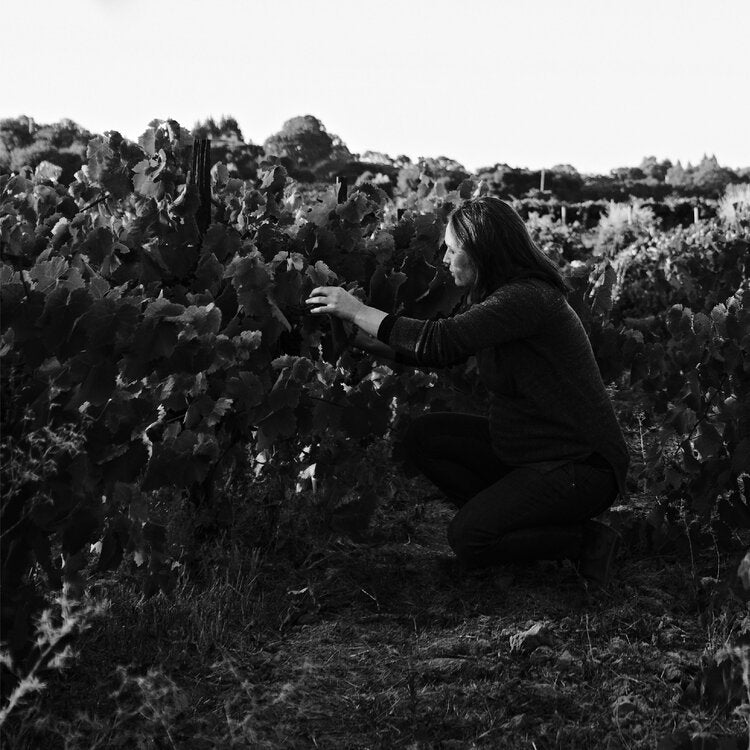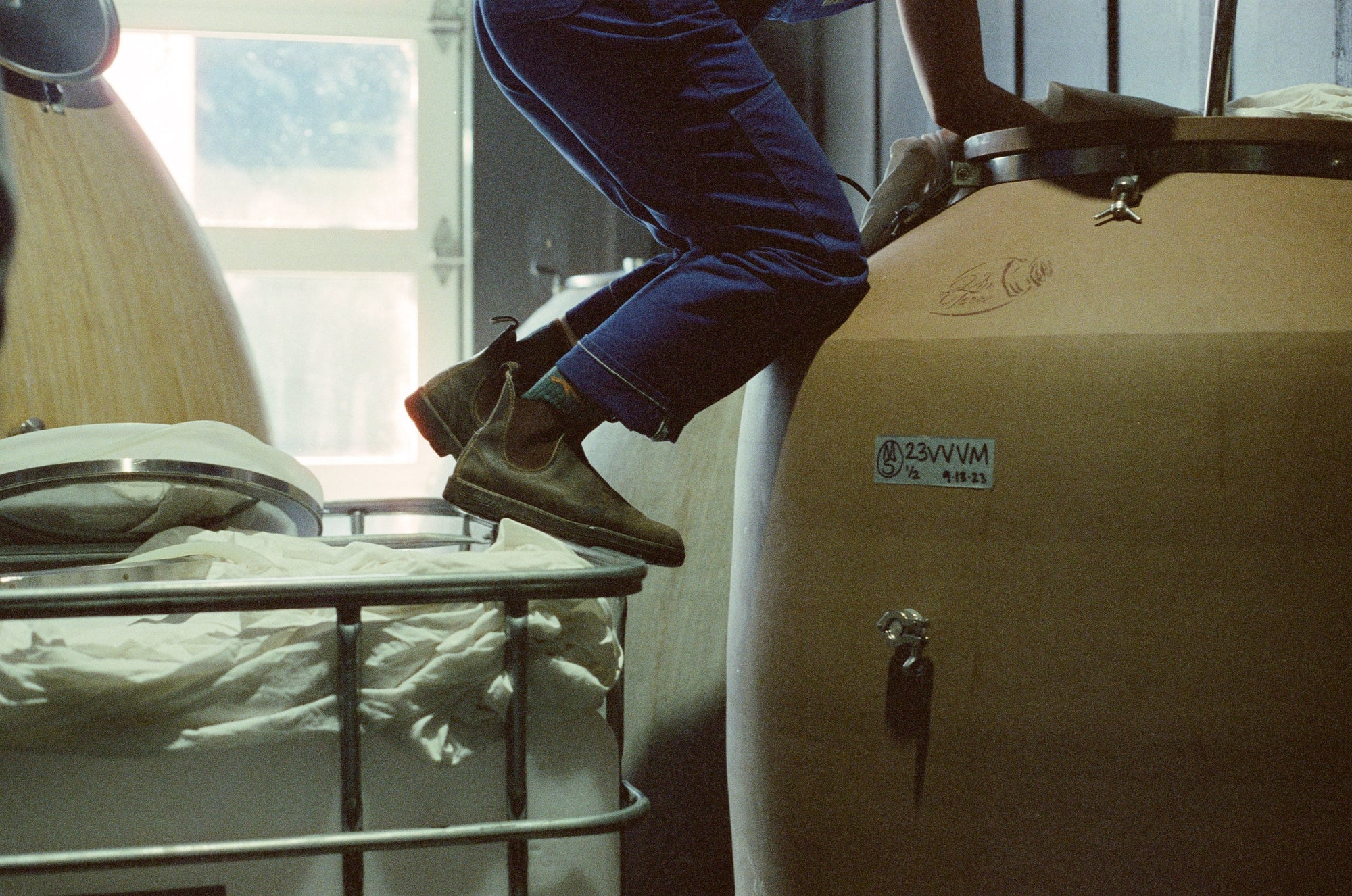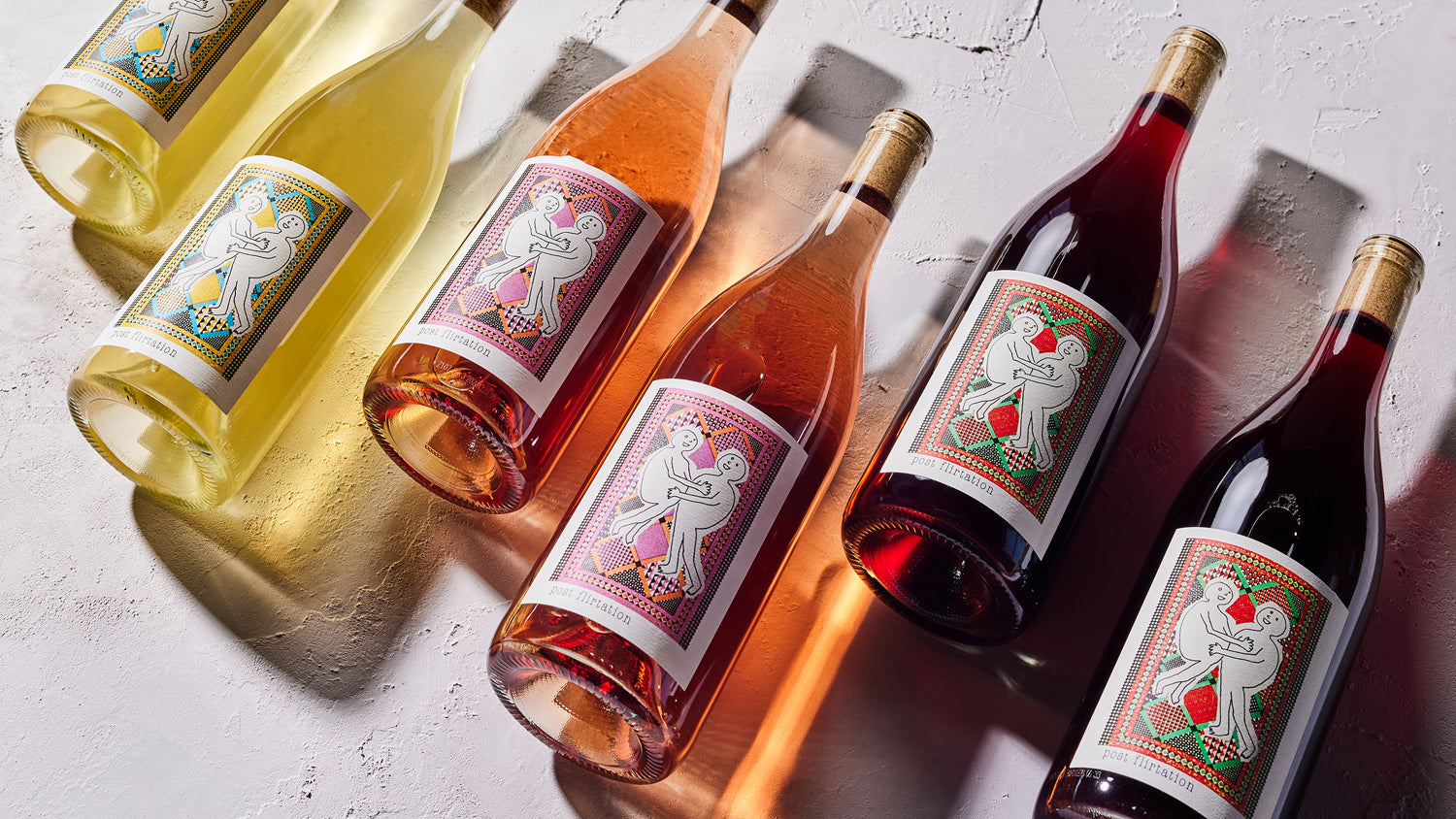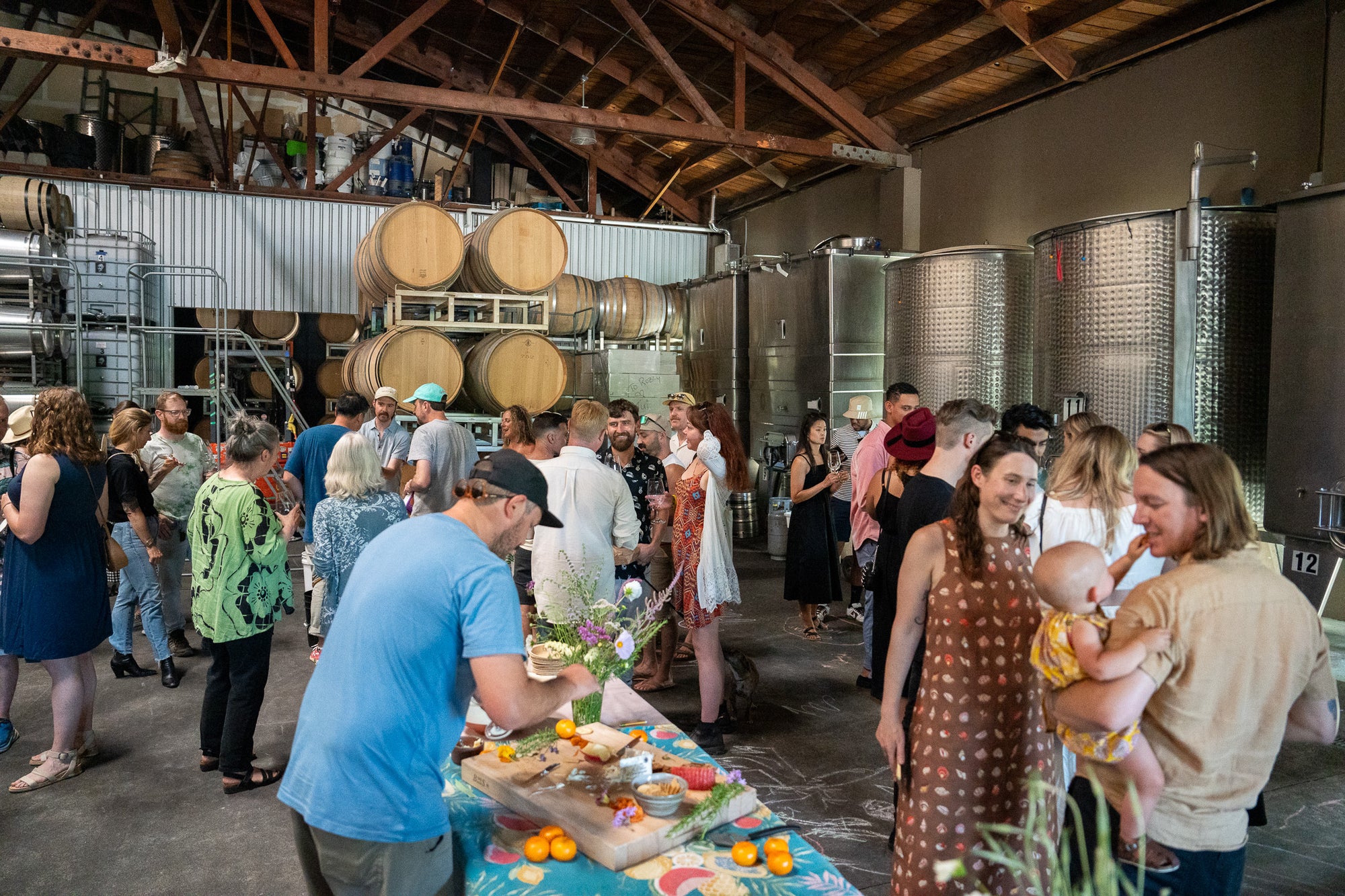This is part two of a six part series that starts here. You can click through to part three at the end of this post.
–
Grapes are perennial crops, which mean that they live beyond one growing season and, if healthy, they will produce fruit year after year of their adult lives. As with every part of winemaking, the central question of whether a winemaker seeks to control nature or work with nature applies to vineyard practices. While organic and low input farmers seek to amplify the wild flavors of their land by focusing on aspects like vine longevity, soil health, and fruit quality, industrialized grape farming has a singular goal: output. Industrialized grape farming crop yields are often 4 to 6 times that of an organic, low input vineyard. An immense amount of control is required in the vineyard to achieve such high yields and that control ultimately takes a toll on the vineyard. While a well tended grapevine can live over a hundred years, producing fruit long beyond the lifetime of the person who planted it, the average vine age in an industrialized vineyard is 30 years.
To understand the distinction between controlling nature and working with nature, we’ll start beneath the ground level.
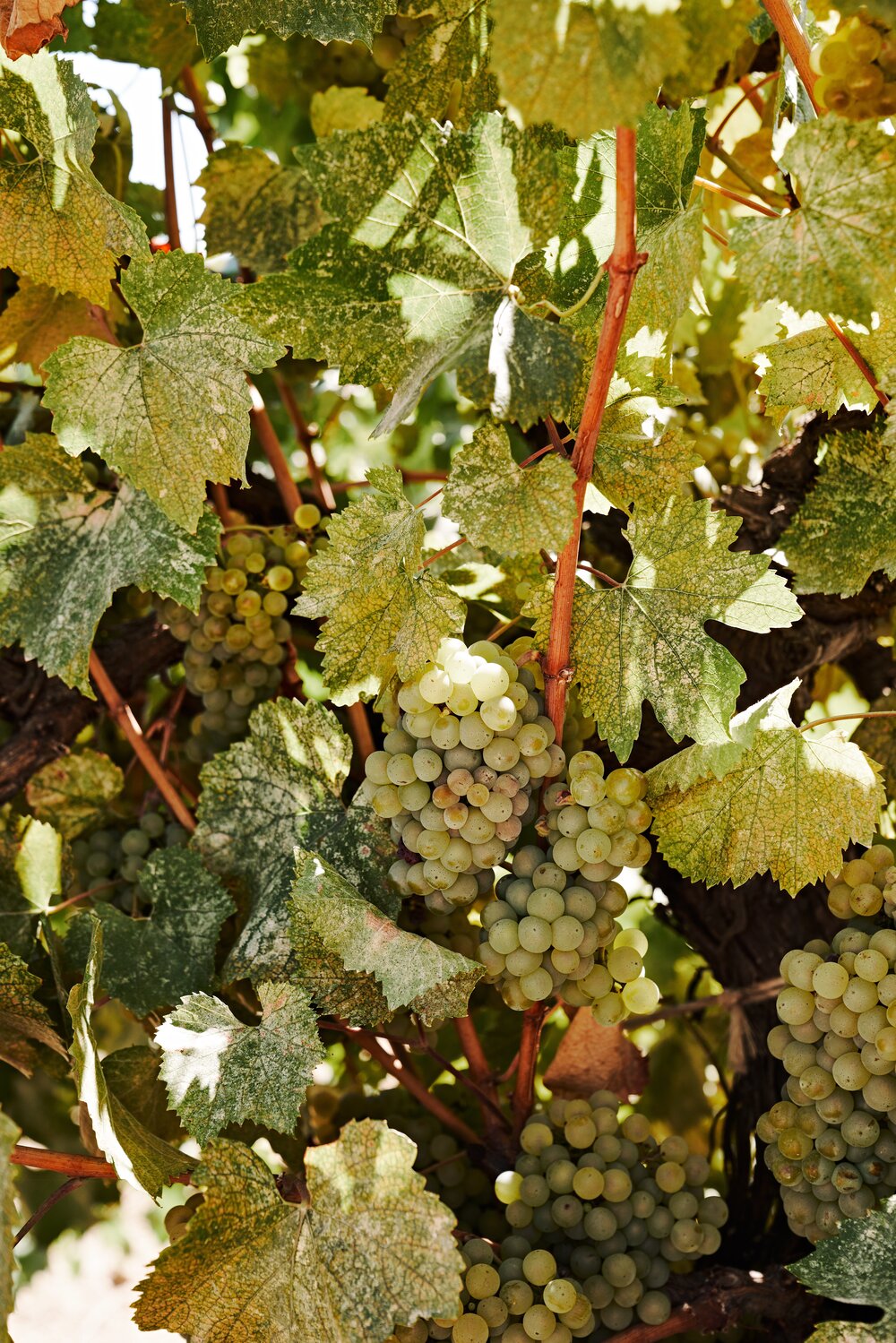
70-year-old, organically farmed Colombard vines at Ricetti Vineyard produce the fruit for our Honeymoon and Post Flirtation White Blend.
Soil + Roots: One industrial viticulture technique, soil fumigation, basically pumps toxic vapor into the soil to sterilize it. This practice has led to the use of synthetic fertilizers which replace nutrients that may be in the soil but are no longer available to the vine. Rather than working with the soil’s natural ecosystem, industrial farmers use synthetic fertilizers to control vine vigor and encourage high yields.
In the organic vineyard, roots not only regulate themselves in terms of water and plant nutrients, but because the soil is not sterilized, they take advantage of really important symbiotic relationships. The low-input vineyard relies on microbes to make soil nutrients plant-available, filamentous fungi called mycorrhizae to greatly increase water uptake through the grapevine roots, and compost to add back organic matter. Vines that are allowed to grow deep roots and access those mineral nutrients will have better tasting grapes.
The wide use of synthetic fertilizers cause all sorts of other environmental issues, but that’s for another discussion.

We hoe a moat around our baby vines at Benson Ranch in Mendocino County and hand water them a few times a year before their roots are deep enough to regulate themselves, thus beginning their life as a dry-farmed vine.
Rootstocks + Vineyard Ecology: The industrial farmer will select shallow rooted rootstocks which are not drought tolerant, but remain close to the surface of the ground. This stems from an effort to control vine vigor while encouraging high yields through irrigation lines and liquid synthetic fertilizers. With the singular goal of high yields in mind, the industrialized vineyard uses herbicides to decrease the shallow rooted vine’s competition for water and nutrients. This has the side-effect of removing the would-be habitat for beneficial insects, creating what we call a ‘clean vineyard’ where nothing else grows besides the vines themselves. Industrialized vineyards cannot rely on nature’s elegant checks and balances to control grapevine pests, and in the name of increasing yields, have really painted themselves in a corner. One input, herbicides, has now led to another input, insecticides.
The organic grower on the other hand, and in particular the grower that practices dry farming, will choose more drought tolerant rootstocks which yield roots that can grow to depths of 20 feet or more.
The low-input grower however, realizes that having other plants in the vineyard is actually a beneficial thing. Since drought tolerant vine roots go much deeper than the roots of the other plants, and the low-input grower is only trying to produce three to four tons of grapes per acre, the competition is not such a problem. Plus, the benefits of having plants (cover crops) in the vineyard make that small amount of competition worth it. Cover crops provide homes for important beneficial insects that often out-compete grapevine pests. This reliance on natural checks and balances in the vineyard negates the need for insecticides and herbicides.

2018 Nero d’Avola Harvest at Fox Hill Vineyard
The Planet: There is more to the story beyond our small vineyards. There is a very important difference between what goes on in the vineyard sprayed with herbicide and the vineyard that is not.
Buckle up for takeoff, we're about to get nerdy!
The most widely used herbicide, Roundup, and its active ingredient glyphosate, interferes with the shikimate pathway, a metabolic pathway found in plants, yes—which is why it works as an herbicide—but also an essential metabolic pathway in bacteria, archaea, fungi, algae, and some protozoans. The shikimate pathway is not found in mammals which is why Roundup and glyphosate was deemed safe for humans (questionable, but that's another discussion). But, just because a chemical is found to not immediately harm us does not mean it is safe for humans or our planet, and here’s why: when we kill the bacteria and fungi in our soil microbiome, we are diminishing the planet’s ability to grow food. Soil bacteria and fungi convert mineral nutrients in the soil that plants cannot ‘eat’ into an ‘edible’ form. There may be plenty of nutrients in soil but they are often not ‘plant-available’ until converted by a microbe. The most famous example of this is nitrogen fixing bacteria. It would be like if a human was trying to digest food without a gut. Without our gut microbiome we can’t absorb important nutrients from our food. The gutless human would be starving to death despite eating plenty.
We have finished our nerdy ascent, you may now unbuckle your seatbelt (and recline that seat of yours).
Each farming system is unique but the point is, generally speaking, when you're working with nature rather than trying to control it, not only are you doing what's better for the environment, you're actually producing better tasting fruit.
This series introduces the ways we work with nature in an effort to help course-correct the California wine industry and make meaningful contributions to the broader movement toward transparency and equity in our food system. It is adapted from Martha’s talk From Grape to Glass: Exploring Natural Wine at Bloom San Francisco 2017.
Photos by Andrew Thomas Lee

